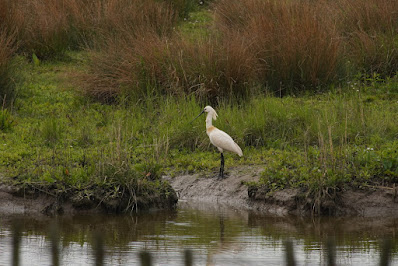
|
|
Lesser black-backed gull (GB) Kleine mantelmeeuw (NL)
©GK
|
The Lesser black-backed gull (Kleine mantelmeeuw) is an impressive
beast. It is larger than the European herring gull (Zilvermeeuw),
but smaller than Great black-backed gull (Grote mantelmeeuw), which
is the biggest gull in the world. Here he/she shows interest in a large
dead fish! Probably they smell it from a distance.

|
| (detail) ©GK |

|
|
Common linnet (GB) kneu (NL)
©GK
|
The Common linnet (kneu) is indeed a common bird. It's a songbird.
Its song is rather unpretentious, but characteristic to identify the
species. Often in groups. It is related to the chaffinch (vink) and
canary (kanarie).

|
|
Mute swan (GB) knobbelzwaan (NL)
©GK
|
With 10 kg the Mute swan is the heaviest (flying) bird in the
Netherlands. Remarkably, but not exceptional, this bird is vegetarian.
Often seen in towns in public gardens. But on Tiengemeten there are
neither gardens nor cities. These birds are wild birds. Note: the first
bird (right) is shitting in flight.

|
|
Tufted duck ♀ (GB) kuifeend ♀ (NL)
©GK
|
For a change a picture of the female Tufted duck. Mostly males of this
species are shown. The female has a chocolate brown head and neck colour
with a beautiful intense yellow eye.

|
|
White wagtail (GB) witte kwikstaart (NL) ©GK
|
White wagtail (witte kwikstaart) in search for insects in grass
with daisies. They are lively and funny birds.

|
|
I have seen where your nest is!!!
©GK
|
The nest of the wagtails was under the roof tiles of our holiday home.
They get a little bit nervous when I watch them. Unfortunately our stay
did not last long enough to see the young fly. I hope the owner is not
going to renovate the roof in the future!

|
|
In the grass there are enough insects.
©GK
|

|
|
a mosquito and a fly?
©GK
|

|
|
a bee? a worm? a caterpillar?
©GK
|
click on images for
larger size






































